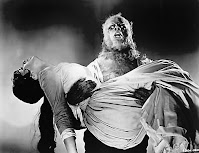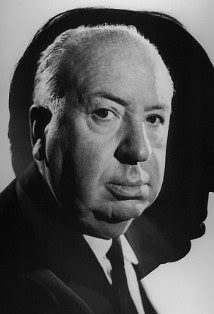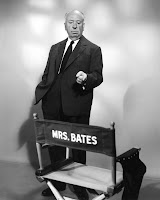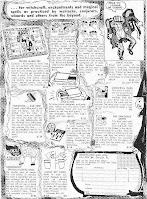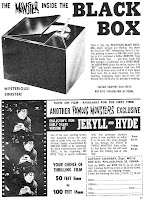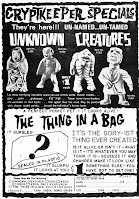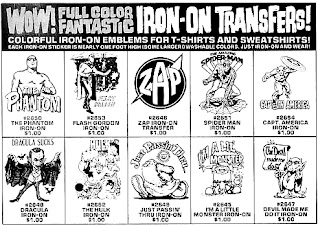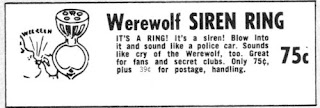by Edward Edelson
1973, 1st edition
Publisher: Doubleday & Company, Inc.
ISBN: Prebound 0385008570
ISBN: Trade Paperback 0385006683
 As a response to the monster-craze phenomenon that had swept over the United States, Doubleday & Company, Inc. published this early look at the history of monster movies. Released in 1973 in both prebound and trade editions, this entertaining reference guide to creature features was very popular among monster kids of yesterday who were eager to learn as much as they could about their favorite celluloid fiends. Great Monsters of the Movies was authored by Edward Edelson (Great Science Fiction from the Movies; Who Goes There?) who was gainfully employed by the New York Daily News as a science editor at the time the book went to press. The reading level of Great Monsters was appropriate enough for both younger readers as well as curious adults who were just discovering the fascinating genre of the horror film. Filled with over 30 movie stills (some quite rare) to accompany the modest length of each chapter, the book's primary function was to motivate interest in the genre and the people involved in the making of these films, all the while providing background trivia and a synopsis to a few selected titles. Although the finished product was quite limited in its coverage of movies, it served as a great starting point for monster fans in the making and proved an easy and enjoyable read overall.
As a response to the monster-craze phenomenon that had swept over the United States, Doubleday & Company, Inc. published this early look at the history of monster movies. Released in 1973 in both prebound and trade editions, this entertaining reference guide to creature features was very popular among monster kids of yesterday who were eager to learn as much as they could about their favorite celluloid fiends. Great Monsters of the Movies was authored by Edward Edelson (Great Science Fiction from the Movies; Who Goes There?) who was gainfully employed by the New York Daily News as a science editor at the time the book went to press. The reading level of Great Monsters was appropriate enough for both younger readers as well as curious adults who were just discovering the fascinating genre of the horror film. Filled with over 30 movie stills (some quite rare) to accompany the modest length of each chapter, the book's primary function was to motivate interest in the genre and the people involved in the making of these films, all the while providing background trivia and a synopsis to a few selected titles. Although the finished product was quite limited in its coverage of movies, it served as a great starting point for monster fans in the making and proved an easy and enjoyable read overall.The book is divided up into five chapters:
THE LEGENDS. The first chapter examines the strange interest in monsters and frightening tales of the supernatural that have fascinated mankind throughout history. From oral traditions, literature, and, finally, the big screen, it is undeniable that fantastic creatures and stories of the macabre have always been appealing to the human race. The legend of the vampire and werewolf are explored, as well as discussions on mummy curses, zombie superstition, mad scientists, giant beasts, and the Frankenstein Monster. Next, author Edward Edelson encourages readers to familiarize themselves not only with the names of horror icons Boris Karloff and Bela Lugosi, but also with the directors and writers who gave these terror motion pictures life: Tod Browning, Roger Corman, Terence Fisher, Alfred Hitchcock, Fritz Lang, Val Lewton, Curt Siodmak, and James Whale.
 THE PIONEERS. This next section takes us on a journey back to the early beginnings of the horror film. From the important contributions of French filmmaker Georges Méliès, to the stylized horrors of German Expressionism, Edelson's insight on silent horror films was in no doubt appreciated by his younger readers who had very little opportunity of seeing these celluloid relics for themselves. Indeed, for those growing up during the 1970s, most silent films were rarely made available to the viewing public, even on television. Here, the spotlight falls on The Cabinet of Dr. Caligari (1920) and Nosferatu (1922) as choices for review before progressing toward Hollywood's reign of the horror picture and the works of the great Lon Chaney in London After Midnight (1927) and The Phantom of the Opera (1925).
THE PIONEERS. This next section takes us on a journey back to the early beginnings of the horror film. From the important contributions of French filmmaker Georges Méliès, to the stylized horrors of German Expressionism, Edelson's insight on silent horror films was in no doubt appreciated by his younger readers who had very little opportunity of seeing these celluloid relics for themselves. Indeed, for those growing up during the 1970s, most silent films were rarely made available to the viewing public, even on television. Here, the spotlight falls on The Cabinet of Dr. Caligari (1920) and Nosferatu (1922) as choices for review before progressing toward Hollywood's reign of the horror picture and the works of the great Lon Chaney in London After Midnight (1927) and The Phantom of the Opera (1925). THREE FRIGHTENING MEN. This terrifying trio, of course, refers to Bela Lugosi, Boris Karloff, and Lon Chaney, Jr. They were the dominant horror stars of Universal Pictures' golden age of famous monster movies, and Edelson takes this opportunity to reflect generously on Frankenstein (1931), Bride of Frankenstein (1935), The Mummy (1932), Dracula (1931), Island of Lost Souls (1933), The Wolf Man (1941), and Frankenstein Meets the Wolf Man (1943). Moreover, the excellent makeup work of Jack Pierce is payed tribute to in this chapter and in other sections throughout the book.
THREE FRIGHTENING MEN. This terrifying trio, of course, refers to Bela Lugosi, Boris Karloff, and Lon Chaney, Jr. They were the dominant horror stars of Universal Pictures' golden age of famous monster movies, and Edelson takes this opportunity to reflect generously on Frankenstein (1931), Bride of Frankenstein (1935), The Mummy (1932), Dracula (1931), Island of Lost Souls (1933), The Wolf Man (1941), and Frankenstein Meets the Wolf Man (1943). Moreover, the excellent makeup work of Jack Pierce is payed tribute to in this chapter and in other sections throughout the book. THE BIG BEASTS. It's giant-monsters-on-the-loose time, as this fourth chapter of Great Monsters of the Movies covers broad ground, from the revolutionary effects of the talented Willis O'Brien, to gorilla pictures, and enormous atomic-age beasts. This time, the focus is on King Kong (1933), Son of Kong (1933), and Mighty Joe Young (1949).
THE BIG BEASTS. It's giant-monsters-on-the-loose time, as this fourth chapter of Great Monsters of the Movies covers broad ground, from the revolutionary effects of the talented Willis O'Brien, to gorilla pictures, and enormous atomic-age beasts. This time, the focus is on King Kong (1933), Son of Kong (1933), and Mighty Joe Young (1949). A MISCELLANY OF MONSTERS. Finally, a montage of monster flicks is paraded in the last chapter of Edelson's book, with particular emphasis on Werewolf of London (1935), Son of Dracula (1943), and Phantom of the Opera (1943). Topics involving sequels, remakes, mummy flicks, TV shows, Hammer Films, and American-International Pictures, are all briefly covered, while the films of Roger Corman, Terence Fisher, Herman Cohen, Ray Harryhausen, Vincent Price, Peter Cushing, and Christopher Lee are given a glance at.
A MISCELLANY OF MONSTERS. Finally, a montage of monster flicks is paraded in the last chapter of Edelson's book, with particular emphasis on Werewolf of London (1935), Son of Dracula (1943), and Phantom of the Opera (1943). Topics involving sequels, remakes, mummy flicks, TV shows, Hammer Films, and American-International Pictures, are all briefly covered, while the films of Roger Corman, Terence Fisher, Herman Cohen, Ray Harryhausen, Vincent Price, Peter Cushing, and Christopher Lee are given a glance at.
Conveniently, an index of names, movie titles, and subject matter is provided at the end. Other films and TV Shows that Edelson mentions briefly throughout the book, are: The Lost World (1925); Dr. Jekyll and Mr. Hyde (1931); The Mask of Fu Manchu (1932); The Black Cat (1934); Mark of the Vampire (1935); The Raven (1935); Dracula's Daughter (1936); Tim Tyler's Luck (1937); The Man They Could Not Hang (1939); The Man with Nine Lives (1940); The Mummy's Hand (1940); The Mummy's Tomb (1942); The Ape Man (1943); The Mummy's Ghost (1944); The Mummy's Curse (1944); Bud Abbott and Lou Costello Meet Frankenstein (1948); Creature from the Black Lagoon (1954); It Came from Beneath the Sea (1955); Rodan (1956); The Curse of Frankenstein (1957); I Was a Teenage Frankenstein (1957); I Was a Teenage Werewolf (1957); Horror of Dracula (1958); The 7th Voyage of Sinbad (1958); The Mummy (1959); Dinosaurus! (1960); The Fall of the House of Usher (1960); The Curse of the Werewolf (1961); Mysterious Island (1961); Pit and the Pendulum (1961); The Day of the Triffids (1962); King Kong vs. Godzilla (1962); The Phantom of the Opera (1962); The Haunted Palace (1963); Jason and the Argonauts (1963); The Raven (1963); The Masque of the Red Death (1964); The Addams Family (1964-1966); The Munsters (1964-1966); Die, Monster, Die! (1965); Planet of the Vampires (1965); Dracula, Prince of Darkness (1966); and Dark Shadows (1966-1971).


